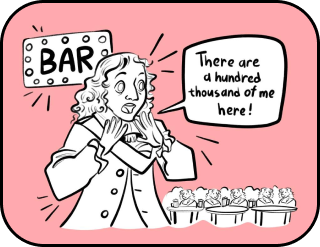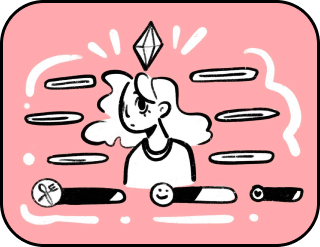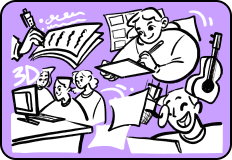Category: Materialization technologies
What children’s drawings reveal
“Every child is an artist. The problem is how to remain an artist once we grow up”
Pablo Picasso
Dedicated to the pediatrician Vladislav Chuneev
At some point in every adult’s life, there comes an irresistible urge to tidy up — to finally get rid of the old clutter that has been piling up for decades in attic corners or on top shelves. But more often than not, this “cleaning” turns into an entire evening of memories, because the very first box opened releases a wave of nostalgia, with every item soaked in emotion: here’s a school certificate for academic achievement, here’s a beloved plush toy, here’s a one-eyed bunny with a torn ear who so bravely guarded dreams from nightmares, here are stickers of a favorite cartoon character that always felt too precious to use… and here is the very first drawing — a portrait of a woman with large round eyes, a thin smile, and noodle-like hair.
Below the drawing, the word “Mama” is written in big, slightly uneven letters. The woman in the picture is holding a “bouquet” of three colorful daisies. Once, this drawing was proudly displayed on the fridge with a magnet and considered nothing short of a masterpiece worthy of the Prado Museum in Madrid. Now it rests in a box of old keepsakes…
This article is a teleportation back to childhood — a world where drawings speak louder than words. In every line and every ink blot, emotions, thoughts, wishes, and feelings of a child are hidden at that very moment in time. Each drawing becomes a language of childlike thinking, offering a window into the inner world children cannot yet express in any other way.

Drawing Lesson No. 1
You’re five years old again, and someone has just given you a brand-new set of colored pencils and a drawing pad. What’s the first thing you draw? After a brief moment of thought, an image comes to mind — your beloved mom. Your hands instinctively reach out to begin her portrait. At five, you couldn’t care less that you’ve never drawn a portrait before, haven’t studied proportions, don’t know what shadows are, or what natural skin tone looks like. You see your mom every day — and that’s more than enough to create a masterpiece.
A red oval appears on the paper — this will be Mom’s face. The choice of color follows solid kid logic: I love the color red, and I love Mom, so she’ll be red.
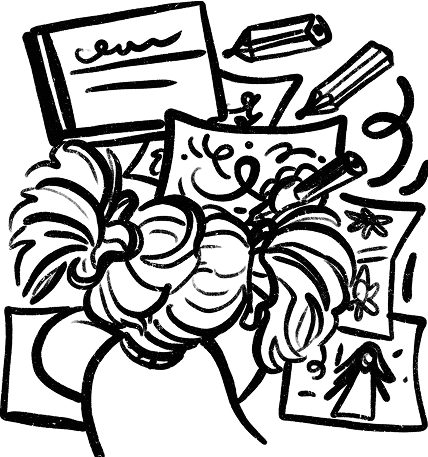
Next, eyes appear in the middle of the oval — the most expressive part of the face for any child, capturing a whole range of emotions. Mom often laughs, and when she does, her eyes turn into narrow slits. So on the drawing, they look like two small, elongated ovals, each with a pupil — two colorful circles.
Above the eyes are curved eyebrows. On the eyes themselves, you draw unnaturally long eyelashes. And beneath the eyes are strange shadow-like shapes that resemble a bad makeup job. But Mom hasn’t used makeup in a long time — those “shadows” are the signs of fatigue you’ve seen on her face when she comes home from work. An adult artist might choose to leave those out, but for a child, they’re a vital part of the picture. You don’t know how to tell your mom she should rest more — maybe your drawing will help her understand?
You could stop at the eyes, but there’s more to say. Soon, lips appear — two thin lines that curve at the ends into a smile, because Mom is kind, and kind people always smile. Between the lines, where teeth should be, is emptiness — because to you, teeth are for biting. In the bedtime stories Mom reads, there’s always a little wolf that sneaks up and bites children on the side. Mom would never do that, so she doesn’t need teeth. At least not in the drawing.
Then comes the nose — a triangle with rounded corners. Who came up with such a funny shape, anyway? Mom’s nose is big, so she always knows when the porridge on the stove is burning. That’s why, in your picture, her nose takes up most of her face.
On both sides of the oval, you draw Mom’s ears, nearly the same size as her face. She’s always on the phone or listening to other people’s stories — so it makes sense her ears would be large. And Mom wears earrings — charming cherry-shaped ones that you used to love playing with when you were even smaller. A cherry is a small red circle. That’s how you draw it.
The portrait seems finished, but something’s definitely missing… Hair! Mom has hair! You have no idea how it grows or why there’s so much of it, but it reminds you of happy noodles because hers is light-colored and straight. The yellow pencil is the lightest in the set, so it gets the honor of drawing a hairstyle made of several straight lines sticking out in every direction — just like Mom’s hair when she wakes up. Or comes home from work. Or goofs around with you. Basically, it’s messy most of the time, so there’s no exaggeration in the drawing.
The portrait is done. It’s bright and colorful, every line bold and confident — because you had no doubts about what you were doing. All that’s left is to sign it with slightly crooked letters so no one confuses who it’s about — though with such detail, how could they? The name is there. Now it’s time to proudly present the gift.
Mom often gives you presents and says, “I love you.” So does that mean gifts are love? If so, then your portrait is a symbol of your love and loyalty — things you haven’t yet learned to express in any other way. Your drawing is a little piece of your “self,” a bit of your soul that longs to be heard. And when Mom hangs your drawing on the wall or puts it on the fridge, it means she’s heard you — even if you didn’t say a single word.

Drawing Lesson No. 2
You’re ten years old, and your head is spinning with countless ideas that, in your opinion, could change the world. Honestly, how hard could it be for adults to invent a fork with a built-in cooling system for hot meals?
If someone had done that already, you wouldn’t have burned your mouth on freshly cooked spaghetti like you did last week. And if someone had invented rear-view glasses, the neighbor’s dog wouldn’t have knocked you over today—you would’ve seen it coming. If you were older, you’d definitely invent all this yourself. But for now, all you can do is draw your scientific innovations on paper and dream about growing up faster.
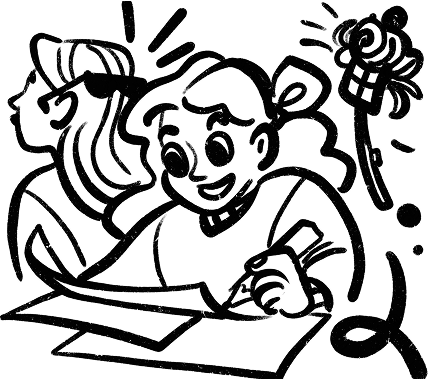
Adults are mostly boring and practical—unless, of course, we’re talking about Dominic Wilcox, an artist, designer, and inventor from England who, in 2016, launched a project called Little Inventors for young inventors and dreamers. 450 kids aged 4 to 12 were given the chance to bring their wildest ideas to life on paper. Wilcox took the most interesting sketches to actual manufacturing companies and asked the workers to turn the children’s drawings into real inventions. The other participants also got the chance to show the world their ideas thanks to the INVENTORS! exhibition. The fork with the built-in cooling system and the rear-view glasses? They became real within this very project.
And not just they.
There was also a self-watering flowerpot, a “leaf catcher” that attaches right to a tree trunk, an automatic toothbrush with a built-in tube of sweet toothpaste, a four-person scooter, a hook for chips, a lamp with adjustable lighting on each side, a fryer for quick homemade fries and nuggets, a phone for people with disabilities, a mechanical hand that’s always ready to give you a high five, silent slippers, an elevator to escape war, a camera that won’t work until you shout at it, an umbrella with a water filter, a walking cane with a built-in radio, multifunctional shoes that work as rollerblades in summer and ice skates in winter, a ladybug umbrella, a candy hat, and even a flying jump rope. These are just some of the inventions that stopped being mere childhood fantasies and became real-life creations.

But right now, you’re ten years old, a brand-new set of colorful markers in your hands, and you’re diving headfirst into your work. Your drawings are more realistic now, more thoughtful, filled with details that reflect your dreams, desires, and goals.
One drawing, then another, then a third—all of them carefully filed away in a folder labeled “Important,” just in case you ever get the chance to meet Dominic Wilcox in person. Imagine the look on his face when he sees how many amazing ideas you’ve come up with! And when that day comes, no one will ever laugh again at your magnetic socks that stick together and never get lost. It’ll be hailed as one of humanity’s greatest inventions.
But for now—better sketch out that design with your new markers!
Drawing Lesson No. 3
You’re twelve now, and you still love to draw. Teachers often scold you for doodling in the margins of your notebook during lessons or for adding alien elements to portraits of scientists in your textbooks—elements that clearly shouldn’t be there. Your parents no longer react to your drawings with the same excitement as they used to, and they certainly don’t hang them on the fridge anymore. And you, more and more often, find your drawings silly, strange, or just plain ugly. You redraw them ten times, change the details, compare them to other kids’ drawings.
“Maybe I should just give it all up?” you think as yet another failed sketch becomes a crumpled ball of paper tossed into the trash.
It doesn’t even occur to you that this very drawing could have saved someone’s life, made someone smile, or inspired someone. But it really could have.
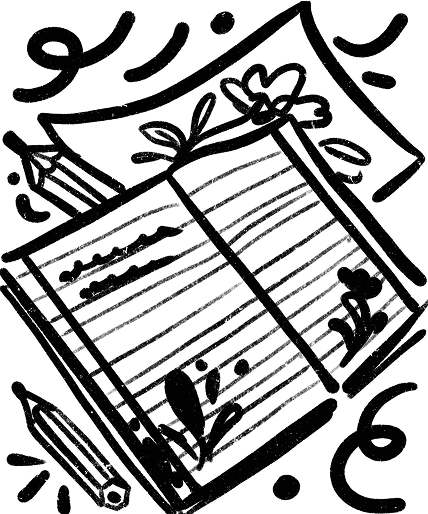
During wartime, when morale among soldiers is low, children’s drawings often become true talismans. Strong men—who seem to have seen it all—hold close to their hearts the tender drawings from children who believe in victory and, despite everything, still see the world as sunny and full of joy. These images give soldiers the strength to move forward, even when there’s no strength left—so they can build the peaceful world those children drew. History remembers cases when soldiers kept kids’ drawings next to their hearts throughout the war, alongside icons and photos of loved ones—believing those pictures would keep them safe from bullets.
Sometimes, children’s drawings can soften even the hardest heart, remind someone of something important, or give them the strength to keep going. Some criminals have confessed to their wrongdoings after receiving drawings from their own children. Some people have started fighting for their health and life again after their kids handed them a heartfelt card. Others, upon finding their childhood artwork in the attic, remembered long-forgotten dreams—and decided to make them come true, even years later. And for some, a single child’s drawing was enough to make them smile and believe in themselves again.
Now, in front of you lies a blank sheet of paper, a simple pencil, and an eraser. You stare at them for a long time before starting a new drawing. Maybe your parents don’t praise you as much anymore. Maybe teachers scold you. Maybe you can’t create a realistic picture on the first try. So be it.
If one day your drawing saves someone’s life—or simply lifts their spirits in a dark moment—it will all be worth it.
Every child has an innate desire to create. They naturally reach for a pencil, a marker, a piece of chalk, or anything else that leaves a mark—even if no one asks them to. Through drawing, a child explores the world, expresses their emotions, learns to dream, and begins to understand themselves. Drawing helps kids cope with inner challenges and develop skills essential for both creative and critical thinking. Through their drawings, children share who they are and how they see the world. And they have a lot to say—if only we learn to understand the language of those “childish scribbles.”
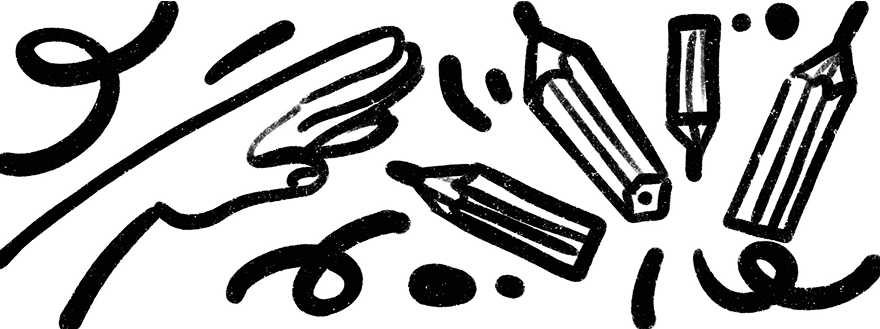
According to the Big Bang Theory, the Great Explosion of discoveries starts right now.
Thank you!


